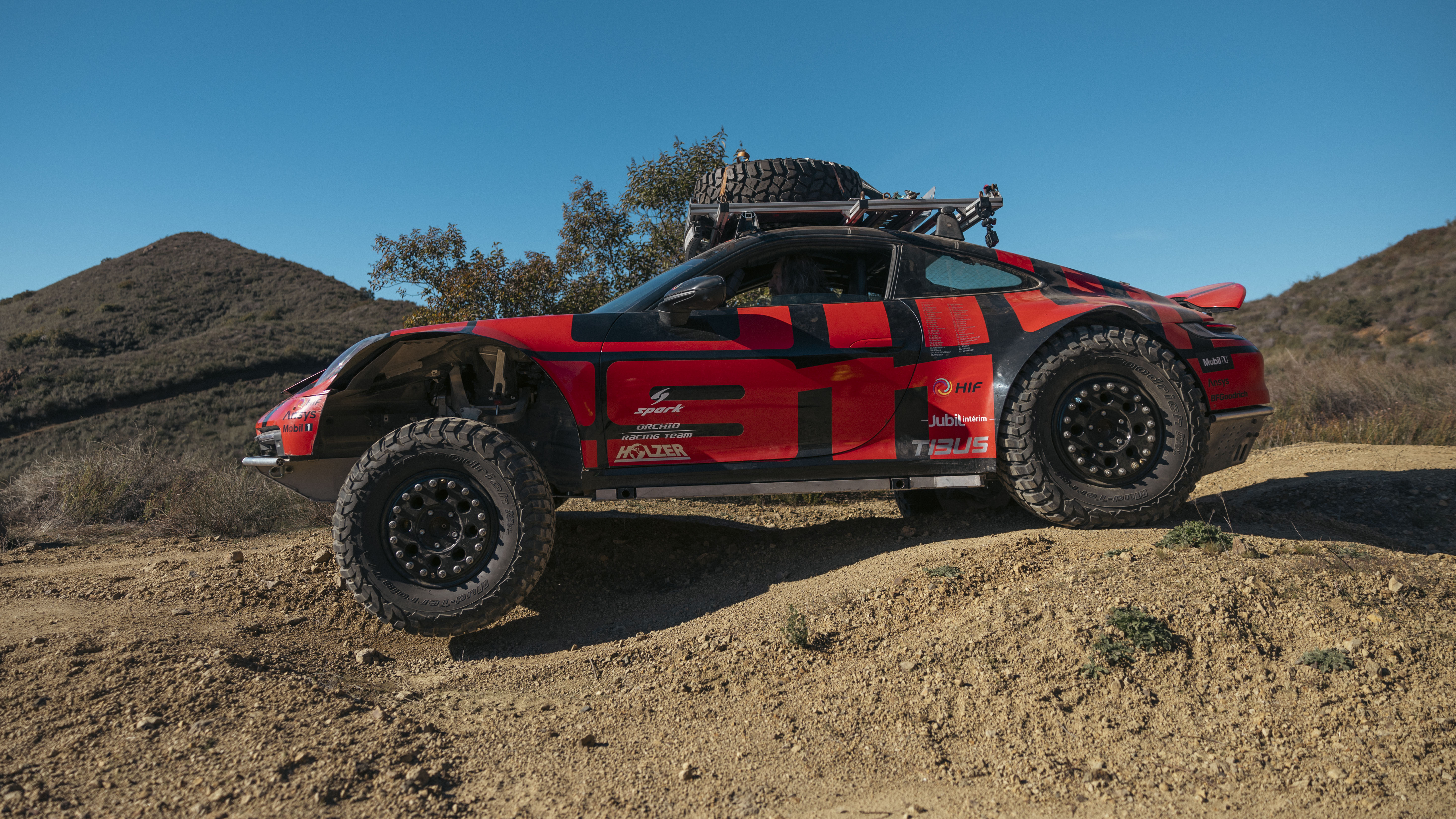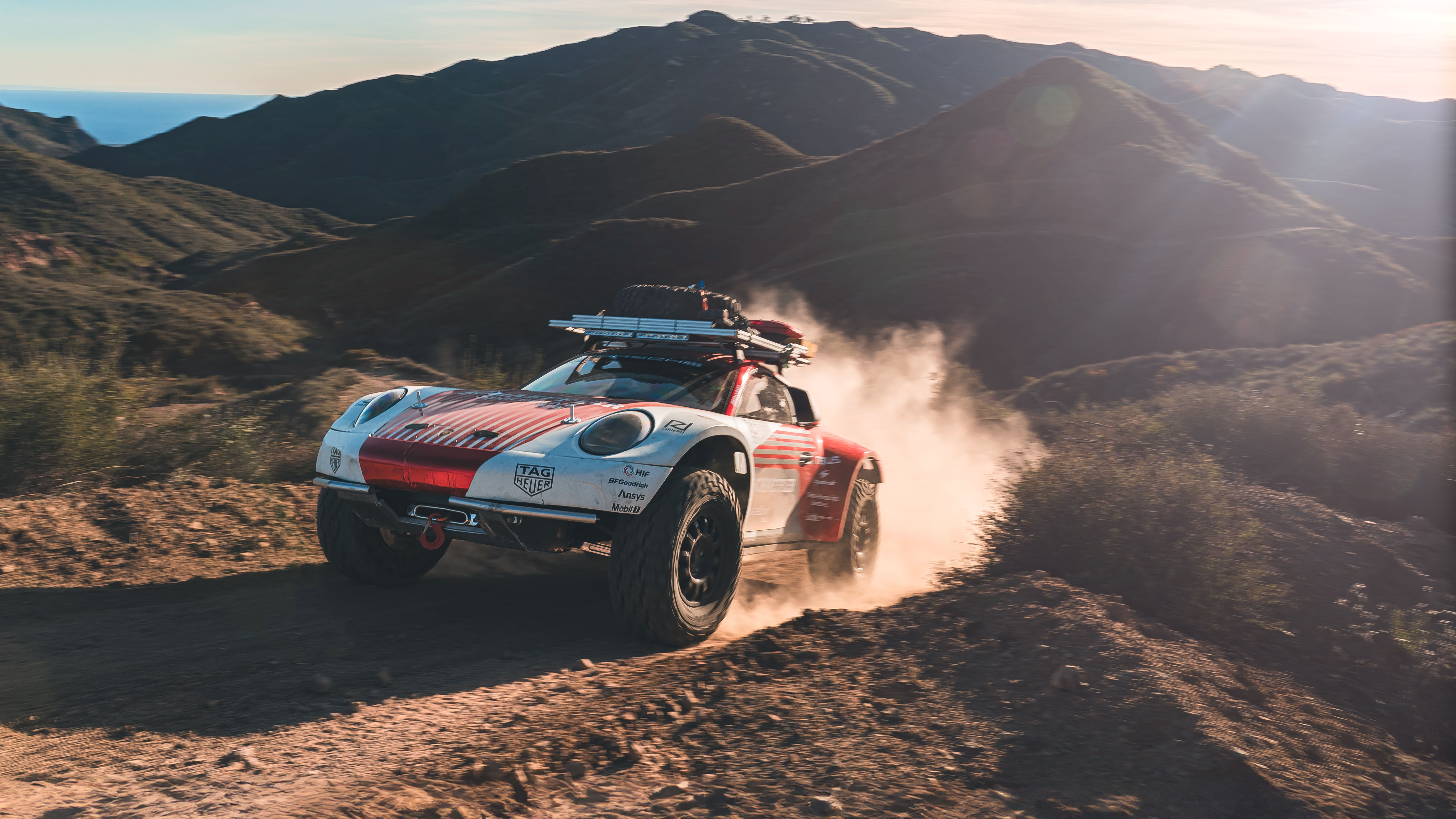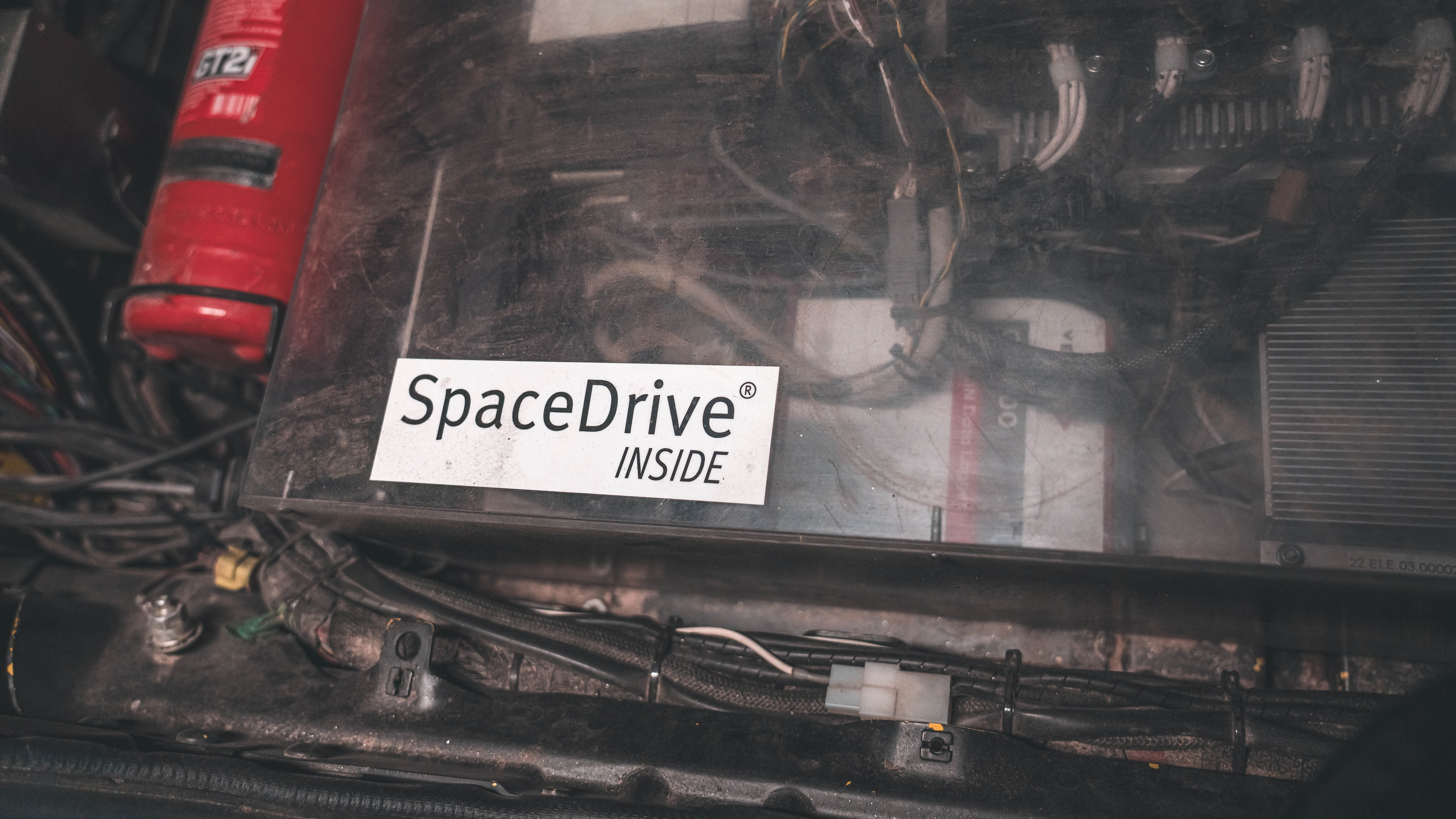
A higher power: driving Porsche's record-setting, portal axle-equipped 911s
They’re the gnarliest, toughest Porsche 911s of modern times – and they’re called Doris and Edith. Altitude does funny things to your brain...
A combination of desert dust coating the dash, a huge incline and bright midday sunshine has resulted in pretty much total blindness approaching the brow of this particular hill. I’m not actually in the desert, but Porsche hasn’t washed the 911 that I’m driving. Just can’t get the staff these days, can you? Although in fact, this particular car won’t be washed ever again, because in December 2023 it climbed the west summit of the Ojos del Salado volcano in Chile and set a new world record for the highest altitude driven by a wheeled vehicle. And that’s ‘wheeled vehicle’ rather than ‘car’ because Porsche nicked the record off two Mercedes Unimogs. Impressive.
So, the volcanic rock stuck in the wheelarches is now officially known as patina and the blinding sun is courtesy of California, because before this gap yah 911 heads off to spend the rest of its life in a museum, Porsche has handed TG the keys for a play on some off-road tracks in the Santa Monica mountains. We won’t be troubling the new record height of 6,734 metres above sea level, but we should be able to get a decent feel for the 911 Dakar’s rock crawling cousin.
Although frankly, there are two slightly different cars here to get to grips with, and it’d be fair to say that both have been fairly heavily modified to allow them to get the better of a Unimog. And nature itself.
Photography: Porsche
Let’s start with the black and red liveried car. Affectionately nicknamed ‘Doris’ by the Porsche project team, it started life as a road-going 911 Carrera 4S and actually still uses that car’s standard 444bhp flat-six engine and accompanying manual gearbox. The idea for the high altitude project was born in 2019 over post-business meeting beers (because all the best projects start in the pub), and just three months after the team was given the green light Doris had been chopped up and fitted with Tibus portal axles, something that Porsche calls a warp connector, fake 2D headlights (to create more room in the arches) and genuine Unimog wheels. Poor old dear.
Michael Rösler, the man usually responsible for road-going 911s, admits that this was “a Saturday club project” with the engineers keeping it a secret from board members and fitting in the tinkering around their usual nine to fives. The first full test of Doris was a roaring success, but before that they needed to check that the engine would cope at altitude. Luckily, Porsche has a fair bit of aviation activity in its history and in the Eighties a group of engineers at Weissach worked to turn the 911 Turbo’s air-cooled flat-six into a commercially available aircraft engine. They succeeded of course and the altitude chamber they had built four decades earlier was resurrected for this latest on-land project.
When it comes to driving Doris, it’s safe to say that it feels like a prototype. The electric doorhandles still work (this is Porsche engineering after all), but the interior is almost completely stripped and a proper roll cage has been inserted to make getting in that little bit more difficult. The dashboard is lit up like a Christmas tree with warning lights – the poor car clearly not knowing what has hit it.
The warp connector means there’s no need for anti-roll bars and essentially allows for huge wheel travel while the 911’s body stays remarkably level. In simple terms, it does that by wedding all four wheels in a way that when one is pushed upwards it enacts a force to push the other three down towards solid ground. That means you’ve pretty much always got all four tyres in contact with the earth for maximum traction. And it really does work. There’s a section on the trail with some uneven bumps and lumps that would have proper SUVs rocking like nan after one sherry too many, but Doris stays so flat I have to jump out and ask one of Porsche’s engineers to have a go so I can see what’s happening from the outside. Incredible.

On the move, the first thing to get acquainted with is the gearing. The portal axles shorten the ratios significantly, so the revs climb rapidly and I’m shifting into second almost as soon as I’ve pulled away. This also means that there’s a new top speed of just under 50mph, but this thing is more about maintaining momentum as opposed to maximum attack. The clever warp connector (which was actually first developed by Porsche for the all-conquering 919 racer but was deemed too unreliable for use in competition) links the front and rear axles and is open for viewing in the cabin. Its constant movement creates a noise that sounds a bit like the car is grinding out on rocks, but there’s no chance of that with this much ground clearance.
The rest of the off-road circuit includes some extremely steep climbs, some proper boulder crawling and even a 28° descent. I spend the whole time well above 3,000rpm and the 911 copes with everything that is thrown at it with consummate ease. It just keeps rolling on. There are a few tight hairpins too, but no need for the hydraulic handbrake, sadly.
Unfortunately, Doris never actually made it to the summit of the Ojos del Salado volcano. You see, Porsche took this car to Chile for the first time in January 2020, and after the team of engineers had been through a period of altitude training they set about the climb, only to be halted by snowstorms at the 6,000m mark. For context, the summit of Kilimanjaro stands at 5,895m.
Top Gear
Newsletter
Thank you for subscribing to our newsletter. Look out for your regular round-up of news, reviews and offers in your inbox.
Get all the latest news, reviews and exclusives, direct to your inbox.
COVID-19 then delayed a second attempt, and when it eventually happened walls of ice and snow meant that access to the summit was impossible. Doris was in a support car role for the third and final record attempt in December 2023, and it was a second car that eventually conquered 60mph winds and temperatures of -20°C to enter the record books. Two-time Le Mans champ and multiple Pikes Peak winner Romain Dumas was driving at the time, after his race team RD Limited had been drafted in to perfect said second car.
The problem with Doris was weight. The second gen car – still using a Carrera 4S as the donor – was christened Edith and wrapped in the same livery as Porsche’s 963 Le Mans hypercar. It was then put on a strict diet, with a carbon bonnet, carbon dash, lighter wheels, Kevlar underbody protection (as opposed to the 80kg of aluminium under Doris) and the carbon doors from a 911 GT3 Cup racecar. In total, Edith came in around 400kg lighter than Doris, and that weight loss is instantly noticeable as it shuffles around on the loose surface.
Wouldn’t look brilliant in the Guinness World Records if it was in 300 different pieces having been punted off a cliff face
Of course, I’m even more careful with this car than I was with Doris. Wouldn’t look brilliant in the Guinness World Records if it was in 300 different pieces having been punted off a cliff face, would it? But Edith is actually easier to drive on this terrain because Porsche swapped out its standard steering for an electronic steer by wire setup. This means there’s no physical connection between the steering wheel and the front wheels. It takes some getting used to at first and almost feels like you’re playing a computer game, but over rough surfaces it completely eliminates the kickback that you get from a traditional mechanical steering linkage.
And even despite the extra development time enforced by the small matter of a worldwide pandemic, this was still a rapid-moving project, so Edith has plenty of standard 911 kit. The engine and gearbox are again unchanged save for some extra cooling mounted midship, and you still get working drive modes and Porsche’s auto rev matching for downshifts. You also get a proper flat-six soundtrack thanks to a motorsport-spec exhaust system and that shorter gearing. But it doesn’t just sound like a 911, it somehow still feels like one too.
There are diff locks at the front and rear, but I spend most of the day in rear-wheel-drive mode for maximum fun, and I’m told that barely any of the actual volcano climb required a switch into four-wheel-drive mode. I decide to avoid the onboard oxygen supply too, although like much of the 15-strong Porsche team Romain did apparently suffer from altitude sickness in Chile. Apparently it’s often the fittest people who feel more of the effects thanks to a lack of acclimatisation, so I’d like to think I’d be an ideal candidate to pilot this thing again if Porsche ever wants to go higher. I would need a slightly wider race seat, though.










